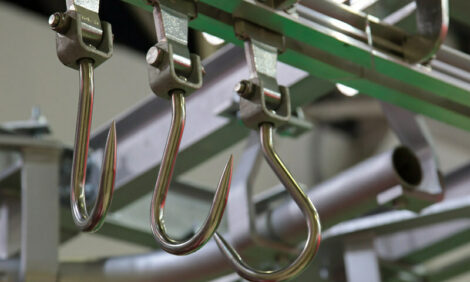



Support for Poultry Inspection Rule Changes
US - The National Chicken Council and the National Turkey Federation have both filed comments backing the new US Department of Agriculture Modernization of Poultry Slaughter rule.The National Chicken Council (NCC) said its members believe a statistically valid, scientifically-based approach to poultry processing will improve food safety and better protect public health.
In 1997, FSIS reported that studies by the National Academy of Sciences, the General Accounting Office and the agency “have established the need for fundamental change in the meat and poultry inspection program.”
To better and more efficiently protect the public from foodborne illness, these reports recommended that “FSIS should reduce its reliance on organoleptic inspection and shift to prevention-oriented inspection systems based on risk assessment.”
To this end, NCC said it supports efforts to modernize the poultry slaughter inspection system to more closely reflect Hazard Analysis and Critical Control Point (HACCP) principles by focusing inspection on food-safety outcomes.
A successful pilot program in effect since 1998 for 20 young chicken plants and five young turkey plants indicates the proposed rule is the logical next step in the modernization of USDA inspection. Plants participating in the pilot program operate under the same stringent standards of microbiological performance as other processing plants while (similar to the proposed rule) allowing plant personnel to conduct some visual inspection duties. Since USDA began ranking plants by category of performance in 2008, these plants have consistently been in the best-performing category.
NCC in its comments stated the proposal’s success depends on making additional clarifications to the proposal and in illustrating how the rule would be implemented.
Specifically, NCC’s comments: recommend necessary implementation procedures; address the proposed sampling requirements; recommend changes to the inspection process for ready-to-cook (RTC) standards; explain why avian leukosis is not a condition of public health concern; recommend special training regarding septicemic and toxemic conditions; explain why line speed should not be arbitrarily limited; address worker safety concerns; request clarification regarding online and offline antimicrobial use; and address chilling requirements.
“The changes described above are designed to ensure an efficient transition to an even safer and more effective slaughter system,” NCC noted.
“NCC and our member companies also take seriously the health and safety of our workers,” the comments continued. “We are confident the increased line speeds allowed under the proposed rule have been demonstrated over several years to be safe for workers in the broiler chicken industry.”
A recent survey of broiler establishments participating in the pilot project show, for both Total Recordable Injury Rates and Days Away/Restricted or Transfer Rates (DART), that these plants are as safe for workers as plants that operate under traditional inspection. In fact, the data indicate that there is no statistical difference between plants involved in the HIMP pilot project and traditional inspected facilities with regards to Total Recordable Injury Rates and DART Rates. Specifically, in 2009 and 2010, total recordable injury rates in establishments participating in the pilot project were 5.6 and 5.3, respectively. Industry average was 6.1 and 5.5 in 2009 and 2010, respectively. In 2009 and 2010, DART rates in establishments participating in the pilot project were 3.4 and 3.9, respectively. Industry average was 4.0 and 3.9 in 2009 and 2010, respectively.
“As a result, NCC is confident that modernizing the poultry inspection system will not endanger our workforce,” NCC said. “Whether plants are operating in the HIMP pilot project or under traditional inspection, the chicken industry continues to improve its record for the health and wellness of its workforce, decreasing its injury and illness rate 74 percent since 1994.
“NCC and our members are committed to poultry production operations that ensure a safe, wholesome and abundant supply of poultry products for both domestic and international markets, and the poultry slaughter inspection system plays an important role in this process.”
The comments from teh NCC were laregly echoed by the National Turkey Federation.









